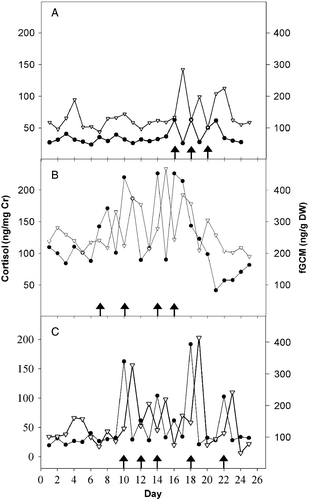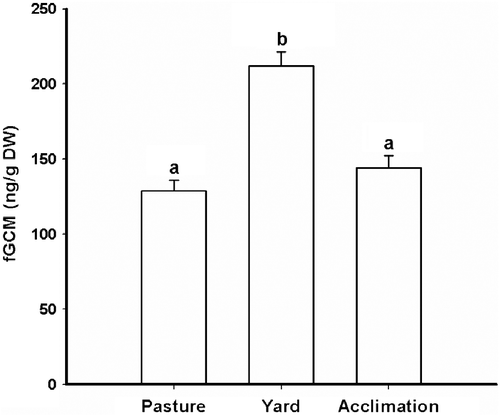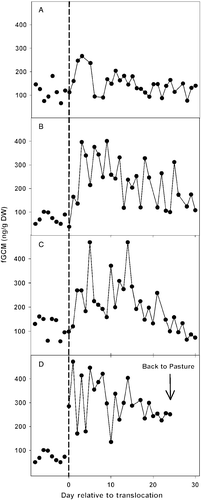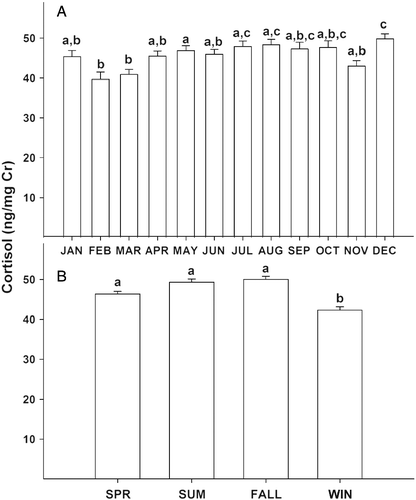Figures & data
Figure 1. Urinary cortisol (–•–) per mg creatinine (Cr) and fGCM (– ∇ –), specifically 11,17-DOA, concentrations per g DW over 25 days in (A) a 5-year old, (B) a 15-year old and (C) a 17-year old female Persian onager. Day-matched urine and fecal samples were collected from each individual over a 25 day interval when the animals were occasionally (at least 48 h apart) exposed to physical restraint and examination (arrows). DW, dry weight.

Figure 2. Mean ( ± SEM) fGCM concentrations in Persian onagers (n = 10) while maintained in a spacious pasture, in smaller yards with increased human interaction (yard) and 2 months after translocation to yard conditions (acclimation). DW, dry weight. Different letters indicate significant differences (post hoc Tukey's studentized range test for multiple comparisons; P < 0.05).

Figure 3. Profiles of fGCM in four representative female Persian onagers (A–D) relative to time of transport from spacious pasture to smaller yards. The dashed vertical line represents day of transport (Day 0). Concentrations depicted prior to Day 0 represent eight samples collected from each onager while in large pasture over 30 days (i.e. not values for consecutive days). The female in profile D failed to acclimate and was transported back to pasture on Day 25 because of continuous refractory behavior while maintained in yards. DW, dry weight.

Figure 4. Mean ( ± SEM) concentrations of fGCM over 30 consecutive days after translocation (Day 0) from pasture to smaller yards (n = 10, days 1–25; n = 9, days 25–30). The straight, dashed line represents a single value for the overall mean fGCM; during the entire period females were sampled while in pasture. DW, dry weight. Asterisks indicate days when fGCM concentrations produced by animals in the yard were significantly elevated (post hoc Dunnett's test for comparison to a control, P < 0.05) compared to the overall mean while in the pasture.

Figure 5. Mean ( ± SEM) urinary cortisol per milligram of creatinine (Cr) in female Persian onagers (n = 9) by (A) month (JAN, January; FEB, February; MAR, March; APR. April; JUN, June, JUL, July; AUG, August; SEP, September; OCT, October; NOV, November; DEC, December) and (B) season (SPR, spring; SUM, summer; FALL, autumn; WIN, winter). Within each panel, different letters indicate significant differences (post hoc Holm–Sidak test for multiple comparisons, P < 0.05) among months or seasons.
